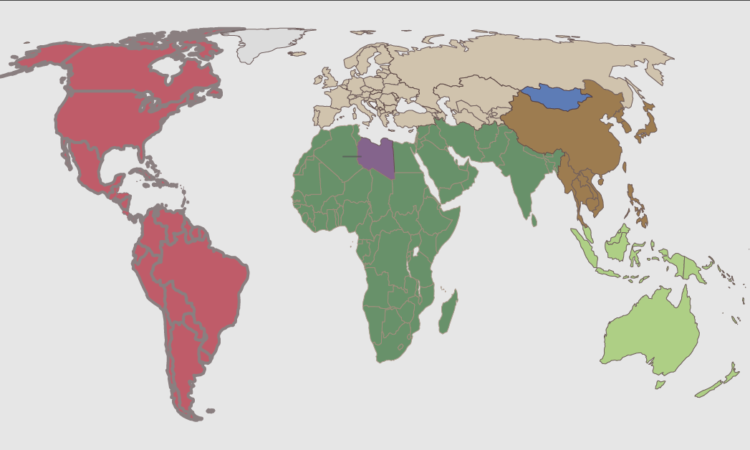
More than three-quarters of global agricultural land is used for livestock, despite meat and dairy making up a much smaller share of the world’s protein and calories.
The most visible mark that humanity has left on the planet is the transformation of wild habitats into farmland.
If we rewind 1000 years, it is estimated that only 4 million square kilometers — less than 4% of the world’s ice- and desert-free land was used for farming.
In the visualization, we see the breakdown of global land area today. Around 10% is covered by glaciers, and a further 14% by deserts and other barren land. The rest is what researchers call ‘habitable land’.
Almost half (44%) of the world’s habitable land is used for agriculture.1 In total it is an area of 48 million square kilometers (km2). That’s around five times the size of the United States.2
Croplands make up one-third of agricultural land, and grazing land makes up the remaining two-thirds.3
However, only half of the world’s croplands are used to grow crops that are consumed by humans directly. We use a lot of land to grow crops for biofuels and other industrial products, and an even bigger share is used to feed livestock.4
If we combine global grazing land with the amount of cropland used for animal feed, livestock accounts for 80% of agricultural land use. The vast majority of the world’s agricultural land is used to raise livestock for meat and dairy.
Crops for humans account for 16%. And non-food crops for biofuels and textiles come to 4%.5
Despite the vast amount of land used for livestock animals, they contribute quite a small share of the global calorie and protein supply. Meat, dairy, and farmed fish provide just 17% of the world’s calories, and 38% of its protein.6

We can also see the simple breakdown of how the world’s land is used in the chart below. As you can see, the area of land used for livestock — including grazing land and croplands for animal feed — is as large as the entire Americas.
Croplands — used for direct human food and non-food uses such as biofuels — are as large as the land area of China.

The world can use much less land for farming
The long-run historical trend of expanding farmland does not have to continue. There are ways that we can cut agricultural land use — by a lot.
By shifting towards more plant-based diets, we would save large amounts of land through reductions in grazing land, and croplands for animal feed. By moving away from biofuels we would free up land that is currently used to grow cereals, vegetable oils, and other feedstocks.
And by improving the productivity of land use — whether using more efficient grazing lands or increasing crop yields — we can continue to produce more food, using less land.
This would be a huge win if we want to preserve the world’s biodiversity. Food production is the biggest driver of biodiversity loss across the world. This was true for most of our history and is still true today.
Cite this work
Our articles and data visualizations rely on work from many different people and organizations. When citing this article, please also cite the underlying data sources. This article can be cited as:
Hannah Ritchie and Max Roser (2019) - “Half of the world’s habitable land is used for agriculture” Published online at OurWorldInData.org. Retrieved from: 'https://ourworldindata.org/global-land-for-agriculture' [Online Resource]BibTeX citation
@article{owid-global-land-for-agriculture,
author = {Hannah Ritchie and Max Roser},
title = {Half of the world’s habitable land is used for agriculture},
journal = {Our World in Data},
year = {2019},
note = {https://ourworldindata.org/global-land-for-agriculture}
}Reuse this work freely
All visualizations, data, and code produced by Our World in Data are completely open access under the Creative Commons BY license. You have the permission to use, distribute, and reproduce these in any medium, provided the source and authors are credited.
The data produced by third parties and made available by Our World in Data is subject to the license terms from the original third-party authors. We will always indicate the original source of the data in our documentation, so you should always check the license of any such third-party data before use and redistribution.
All of our charts can be embedded in any site.
